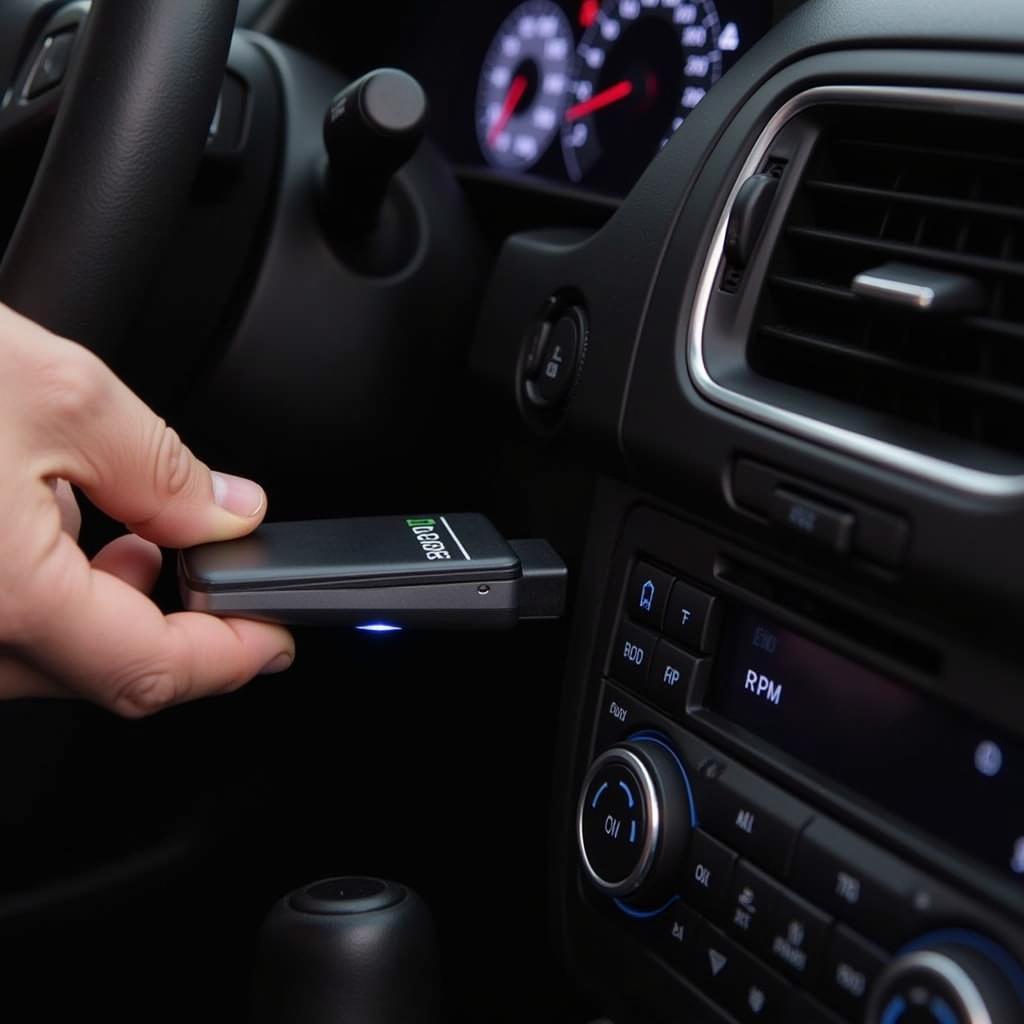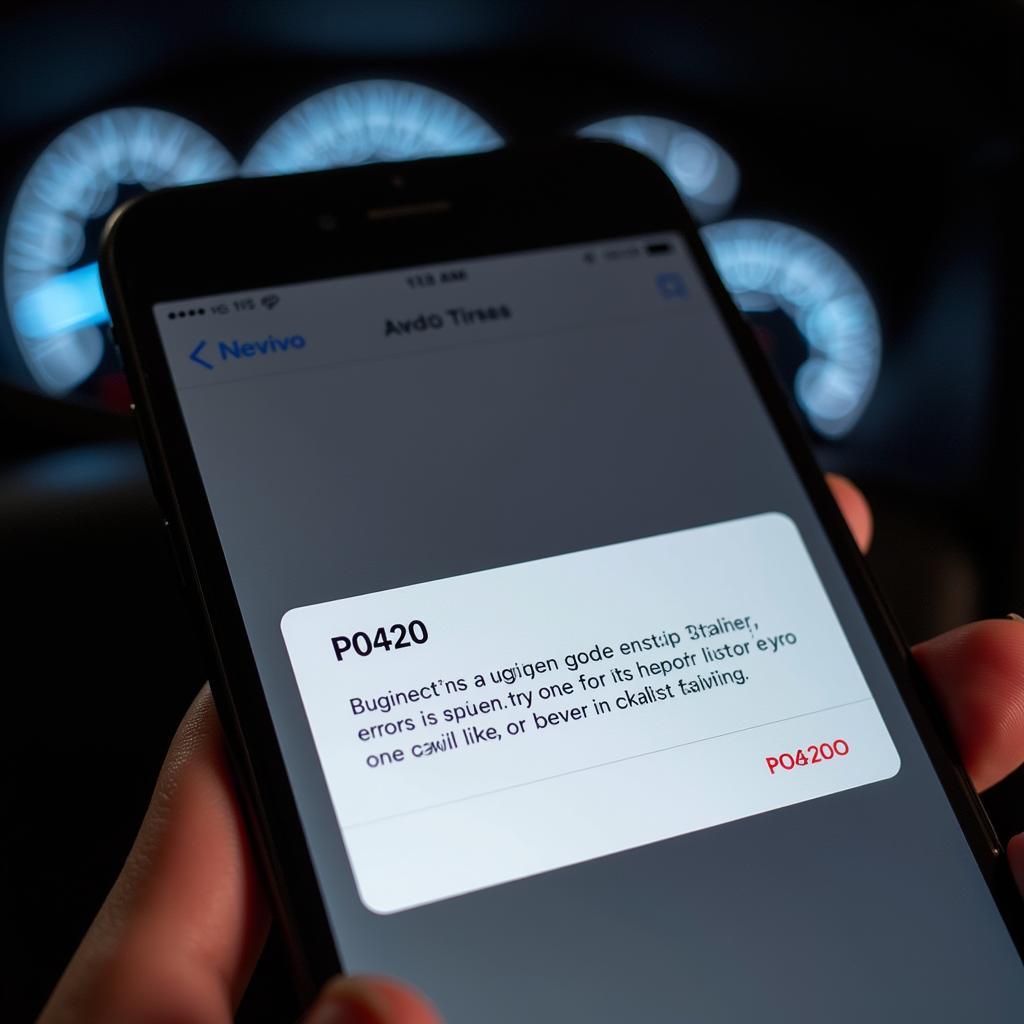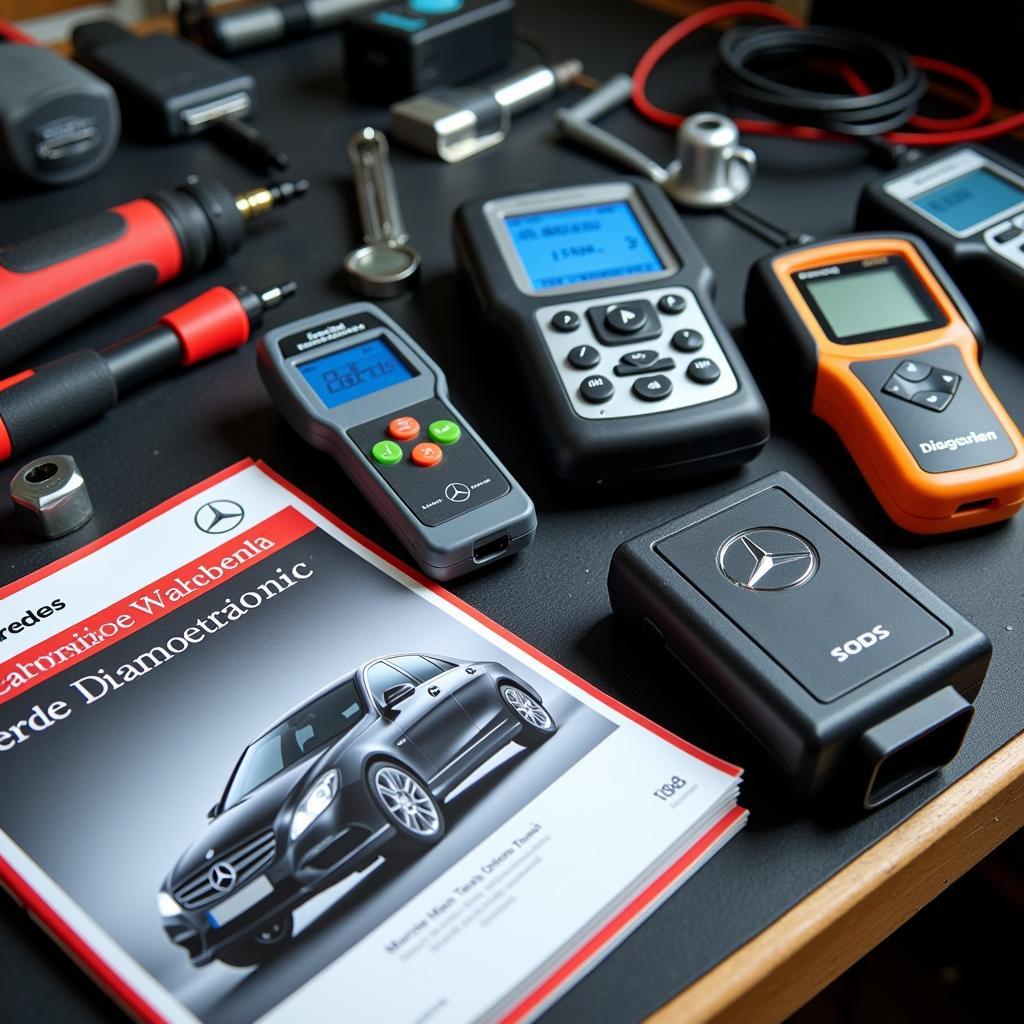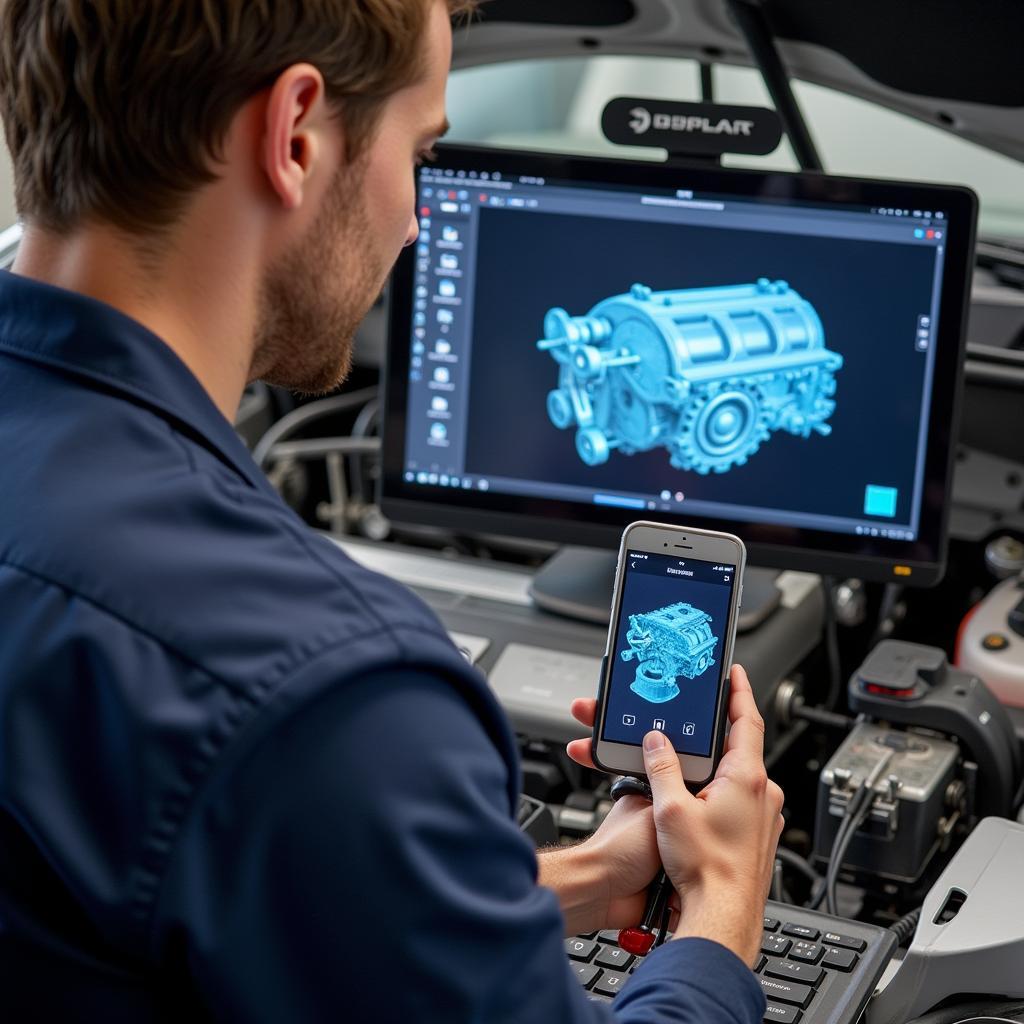A Bluetooth Obd2 Car Auto Diagnostic Scanner is an essential tool for any car owner or mechanic. It allows you to connect your smartphone or tablet to your car’s onboard computer and read diagnostic trouble codes (DTCs), view live data, and even perform some basic maintenance tasks.
 Bluetooth OBD2 Scanner Connected to Car
Bluetooth OBD2 Scanner Connected to Car
How Does a Bluetooth OBD2 Car Diagnostic Scanner Work?
Your car’s computer system constantly monitors various sensors and systems throughout the vehicle. When a problem is detected, it logs a DTC in its memory. A Bluetooth OBD2 scanner retrieves these codes and translates them into readable information. This allows you to identify the root cause of the issue, saving you time and money on unnecessary repairs.
Benefits of Using a Bluetooth OBD2 Scanner
There are many benefits to using a Bluetooth OBD2 car auto diagnostic scanner, including:
- Save Money on Repairs: By diagnosing problems yourself, you can avoid costly trips to the mechanic for minor issues.
- Early Problem Detection: Regular scans can help you identify potential problems early on, preventing them from becoming major headaches down the road.
- Improved Fuel Efficiency: Some scanners provide live data on fuel consumption, allowing you to adjust your driving habits for optimal efficiency.
- Enhanced Vehicle Knowledge: Understanding the data from your car gives you a deeper understanding of its health and performance.
- Convenience: Bluetooth connectivity eliminates the need for tangled cables and allows you to scan your car from the comfort of the driver’s seat.
Choosing the Right Bluetooth OBD2 Scanner
With so many Bluetooth OBD2 scanners on the market, choosing the right one can be daunting. Here are some factors to consider:
- Compatibility: Ensure the scanner is compatible with your car’s make, model, and year. Most modern vehicles (1996 and newer) are OBD2 compliant.
- App Features: Different scanner apps offer various features, such as live data monitoring, DTC definitions, and graphing capabilities.
- User Reviews: Check online reviews to get an idea of the scanner’s performance, reliability, and ease of use.
Using a Bluetooth OBD2 Scanner
Using a Bluetooth OBD2 scanner is generally a straightforward process:
- Locate your car’s OBD2 port: It’s typically located under the dashboard on the driver’s side.
- Plug in the scanner: Insert the scanner into the OBD2 port.
- Turn on your car’s ignition: This powers up the scanner and the car’s computer system.
- Pair the scanner with your device: Enable Bluetooth on your smartphone or tablet and search for available devices.
- Launch the scanner app: Once paired, open the scanner app and follow the on-screen instructions.
[can-do plus scan tool]
Common OBD2 Trouble Codes and Their Meanings
Here are a few common OBD2 trouble codes and their general meanings:
- P0420: Catalyst System Efficiency Below Threshold (Bank 1) – This code indicates a problem with the catalytic converter.
- P0300: Random/Multiple Cylinder Misfire Detected – This code suggests an engine misfire, which can be caused by various factors.
- P0171: System Too Lean (Bank 1) – This code means the engine is running lean, indicating an issue with the air/fuel mixture.
- P0101: Mass Air Flow (MAF) Circuit Range/Performance Problem – This code signals a problem with the mass airflow sensor, which measures the amount of air entering the engine.
 OBD2 Scanner Showing Engine Error Code
OBD2 Scanner Showing Engine Error Code
Tips for Using a Bluetooth OBD2 Car Diagnostic Scanner
- Consult your car’s manual: Refer to your car’s owner’s manual for information on specific DTCs and troubleshooting procedures.
- Update the app regularly: App updates often include new features, bug fixes, and improved compatibility.
- Don’t ignore warning lights: If your check engine light illuminates, it’s crucial to address the issue promptly.
“A Bluetooth OBD2 scanner is a powerful tool for anyone who wants to take control of their car’s maintenance,” says John Smith, Senior Automotive Engineer at ScanToolUS. “It provides valuable insights into your car’s health and empowers you to make informed decisions about repairs.”
Conclusion
A Bluetooth OBD2 car auto diagnostic scanner is a valuable investment for any car owner. It allows you to diagnose car problems, save money on repairs, and gain a better understanding of your vehicle’s health. With its ease of use, affordability, and comprehensive features, a Bluetooth OBD2 scanner is an indispensable tool for both car enthusiasts and everyday drivers.
For any questions or assistance with Bluetooth OBD2 scanners, contact the experts at ScanToolUS at +1 (641) 206-8880 or visit our office at 1615 S Laramie Ave, Cicero, IL 60804, USA.
FAQs
1. Will a Bluetooth OBD2 scanner drain my car’s battery?
Most scanners have a low power draw and won’t drain your battery if used correctly. It’s always good practice to unplug the scanner after use.
2. Can I use a Bluetooth OBD2 scanner with multiple cars?
Yes, Bluetooth OBD2 scanners are generally compatible with a wide range of vehicles. Ensure the scanner supports your specific car models.
3. Do I need an internet connection to use a Bluetooth OBD2 scanner?
You typically don’t need an active internet connection while using the scanner. However, some apps may require internet access for software updates or to access online databases for DTC definitions.
4. Can a Bluetooth OBD2 scanner clear fault codes?
Yes, most scanners allow you to clear fault codes after addressing the underlying issue. However, it’s essential to diagnose and fix the problem before clearing the codes.
5. Are Bluetooth OBD2 scanners legal?
Yes, Bluetooth OBD2 scanners are legal to use in most countries. However, it’s always best to check local regulations regarding vehicle modifications and data access.



Pingback: OBD2 Scanner Won't Connect to Car: Causes and Solutions - Car Scan Tool